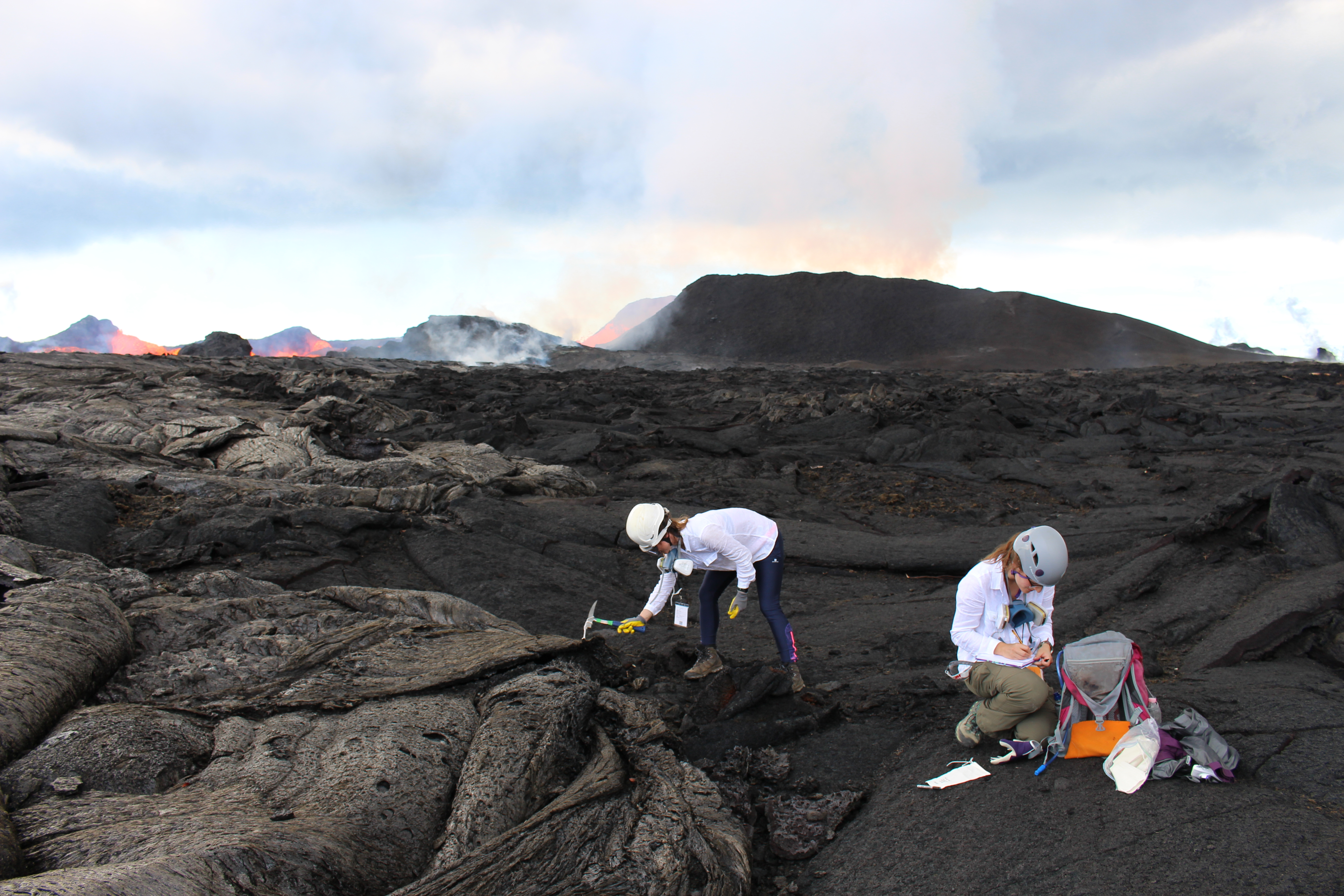Today is International Day of Women and Girls in Science (11 February), a celebration of women and girls in science led by UNESCO and UN-Women.
In this blog post, we bring together stories from women researchers across our Department to highlight the variety of roles within Earth Sciences.
To mark this day, we asked our researchers what pieces of equipment or items they rely on for their everyday research – whether they spend most of their time collecting data in the lab, field or via computer models.
Madi East, PhD student in environmental geochemistry
Madi is a geochemist who studies how corals build their intricate skeletons, and the factors that impact how faithfully they capture environmental data on the climate of the past. Her hope is to improve predictions of how these vital organisms will fair under future warming.

Professor Sally Gibson, Petrologist and Geochemist
Sally’s research investigates how deep Earth processes impact our planet’s surface. This work takes Sally to some of our planet’s oldest and deepest rocks, as well as exotic volcanoes like in the Galapagos, to collect rocks that she analyses back in the lab.

Dr Camilla Penney, Geophysicist
Camilla researches earthquakes, combining data from earthquake waves, satellite imagery, GPS and field studies with numerical modelling to understand how the Earth’s continents are moving, and the forces which drive their motion.

Emma Perry, PhD student studying nuclear materials
Emma is researching how nuclear fuel waste stored deep beneath the ground can be impacted by groundwater seepage. In the lab, Emma uses high-tech microscopy to examine how safe analogues for nuclear waste dissolve in water.

Dr Rachel Rhodes, Ice Core Scientist
Rachel is an ice core scientist who studies bubbles of ancient air and chemical impurities trapped within polar ice cores to reconstruct past changes in the Earth’s climate. Her work helps us understand how the climate system works and might respond to human induced warming.

Dr Emilie Ringe, Mineralogist and Materials Scientist
Emilie conducts most of her research in the lab, often with the help of supercomputers. She uses small particles of metals to create materials that interact very strongly with light – the reaction having applications in chemical sensing, light-driven catalysis and cancer therapy.

Lizzy Steell, PhD student in palaeobiology
Lizzy studies the evolutionary history of birds called passerines, a group which includes almost half of all bird species. Lizzy uses a range of tools to make high-resolution 3D models of bird skeletons that she then compares with living and fossil birds to unravel their evolution.

Dr Emily Stevenson, Environmental Geochemist
Emily studies how Earth’s major rivers move carbon around our planet’s surface and eventually into the sea. Emily’s fieldwork takes her to remote areas of the Arctic and tropics in order to sample and profile the chemistry of river waters.

Featured image: Credit Emma Liu/USGS
From left to right: past PhD students Penny Wieser and Emily Mason collecting fresh lava erupting from Fissure 8 vent, Hawaii.
Credit: Emma Liu/USGS.


